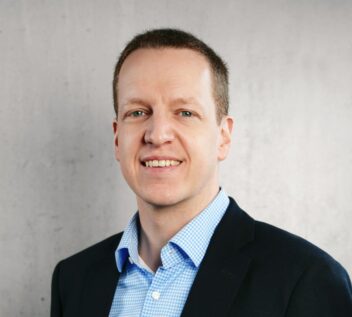Our SMART FACTORY! Principles define a proven way to approach the development of software products and solutions.
The underlying agile operating model builds the foundation for value-driven and scalable product development in the broader sense. While it’s relatively easy to manage an MVP or a handful of squads and products, it is essential to establish an operating model that supports sustainable and scalable product and solution development.
Agile
Agile has been around for a while for many good reasons. We appreciate the flexibility to focus on what needs to be done next; either we planned accordingly, or it has emerged as such.
Yet product owners need reliable planning input. Interpreting agile too strictly would, in fact, not allow this. We combine agile methods with strategic milestone planning. It’s essential to keep product development on track and not get lost for whatever reason. This is essential to our understanding of assuming product responsibility. Over the years, this has become our interpretation of agile, which works well for us and many of our customers.
Some apply a different agile version, such as SAFe or Kanban. We’re happy to adapt.
Agile Operating Model Design Options
Again, we’re happy to fit into existing agile operating models, but our long-term experience and expertise allow us to introduce customers to a model, too.
We believe in cross-functional squads with T-shaped experts working in digital factories or product and platform models. While a digital factory is more straightforward, we prefer a product and platform approach as it removes barriers between business stakeholders and software engineers. The “T shape” reflects the broad expertise spanning business and tech matters while ensuring the required depth in skills and ability to deliver.
Another aspect is the vertical organization of the squads along “value streams” with a focus on the desired value creation. The squads each assume full “product ownership” for a (sub)domain. The extensive autonomy in this framework reduces dependencies and thus enables more scalability and agility within a “value stream.” Additional platform teams act as “enablers” and provide cross-cutting functionality. In this way, they strengthen the overall group, create synergies, and are available to vertical squads as experts and mentors in an advisory capacity.
To support the operational work in the squads, we organize business panels and formats to exchange know-how and experience. Guilds, task forces, and advice from technical evangelists strengthen cross-squad exchange. This helps us to achieve our goals efficiently and within the framework of our SMART FACTORY! Principles significantly support the enablement of our customers’ employees.
Product Management
We believe in domain-driven design to ensure efficient and effective software support for business objectives and customer-centricity.
Workshops, “event storming,” and other exploratory exercises will inform the MVP scope and the ultimate product vision you want us to achieve together. This includes reality checks, effort and time estimates, technology planning, and insights relevant to team sizing, risk management, ways of collaboration, and other resource allocation. A team of business and tech experts from your organization and ours will establish a solid foundation for the software products we desire to build.
The close collaboration between the customer’s product owner and our solution architect is critical. This includes us assuming responsibility for the products we create and committing to the objectives we defined earlier. We will ensure the execution of engineering tasks, like facilitating team communication and collaboration. Besides managing a backlog and tasks, inspiring and guiding squad members regarding their day-to-day responsibilities and career development is essential.






